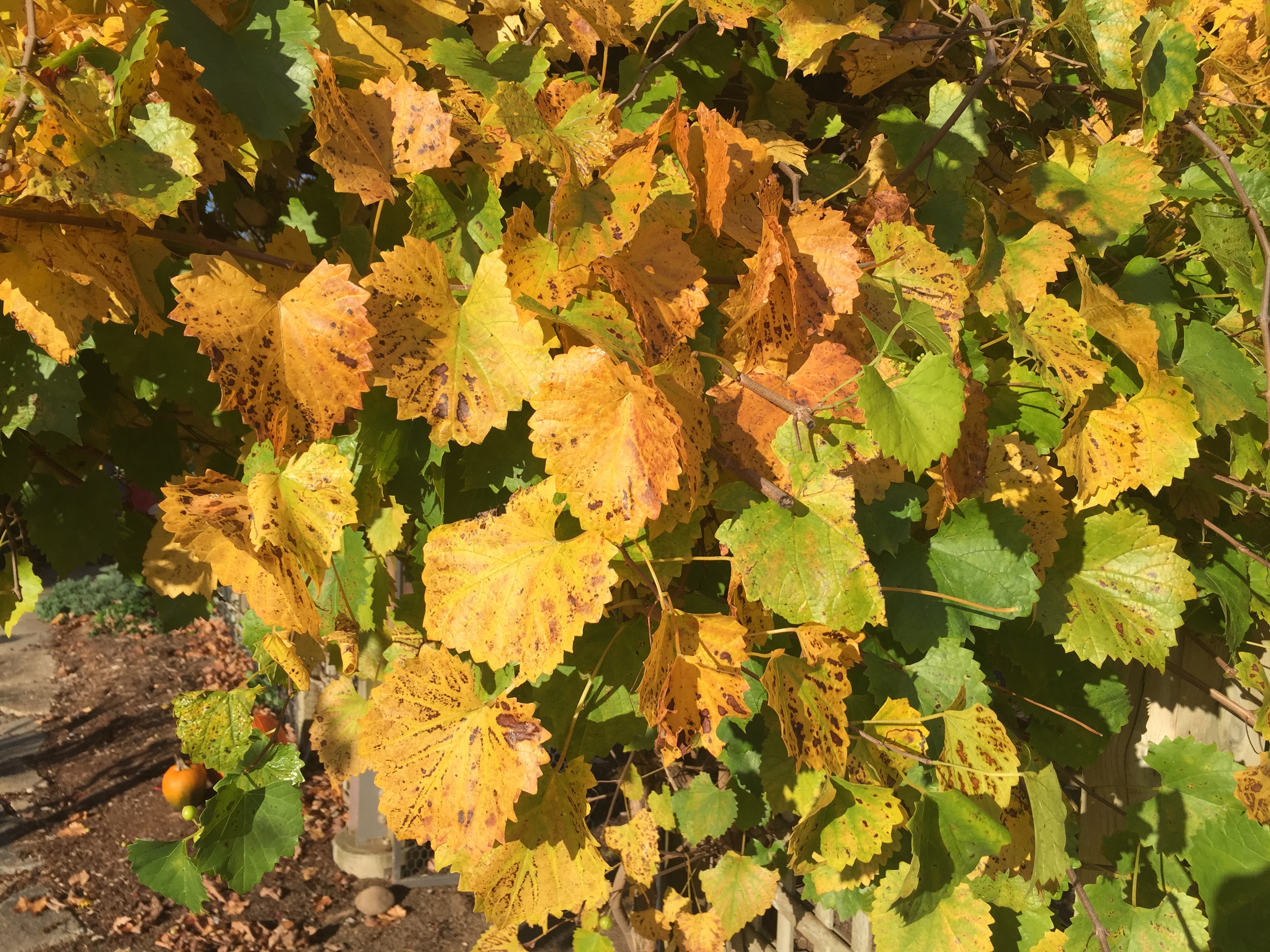Resource Library
Plant of the Week: Vitis rotundifolia Muscadine Grape, Scuppernong
I’m a lazy gardener who redresses this character flaw by describing my sometimes-overgrown garden as being “naturalistic” in design. Because of my inherent laziness, vines have always scared me, because I know their one goal in life is world domination. Ignore them too long and they will take over. Plants like muscadine grape (Vitis rotundifolia) are nice additions to the garden, but make sure you have considered their aggressive ways before planting them.

Muscadine grape is a native Arkansas grape that offers fruit plus benefits when used in the garden. (Image courtesyGerald Klingaman.) Credit mandatory.
About 60 species of grapes are found in the world, and are described in their own plant family. The grape genus is split into two sections. Almost all belong to the typical bunch grapes with 38 chromosomes, while the muscadine and a few other species comprise the other section because they have 40 chromosomes.
Muscadine is native to the southeastern states from Delaware to Florida, west to East Texas and up the Mississippi River into southern Missouri. It does not occur naturally where temperatures drop below 0ºF, and so is found statewide in Arkansas except on the Ozark Highlands.
Like most grapes, muscadine is a rampant-growing woody vine capable of reaching the tree tops of the tallest forests, meaning it has the potential of growing vines 100 feet or longer. Vines can become the size of a man’s arm with shaggy brown bark. Leaves are late to appear in the spring, shiny green, rounded with serrate margins and to 6 inches across. In the fall they can have a nice yellow fall color. Unlike many grapes muscadine is resistant to most diseases and insects so the foliage remains relatively blemish free during the season.
Fruit seem to be produced individually, but the open bunch actually contains 4-10 berries an inch or more in diameter that are usually dark purple to black in color when seen in the wild. The bronze-colored wild forms were first noted along North Carolina’s Scuppernong River and that name is often used to describe clones with this colored fruit. More than 100 cultivars have been developed with berries ranging from red to purple to yellow. The berries have a thick, unpalatable skin, so when eaten fresh the seeds and the skin are both discarded after enjoying the sweet pulp.
In nature, muscadine vines are mostly non-fruiting male vines. Some clones have been selected to produce perfect flowers with both male and female parts but for best results it is usually better to include a male vine amongst the females to ensure good pollination. Fruit ripen after about 120 days. The large muscadine I have observed for the past eight years begins fruiting in early September and produces ripe berries over the next six weeks.
Muscadine was the first New World grape to be cultivated in the United States, beginning in the mid 17th century. It was first pressed into service for wine making, but has been popular in the southern states for jellies, juices and fresh consumption. Because of its resistance to the serious diseases and insects plaguing European wine grapes when grown in North America and its short chilling hour requirement, it was the default grape in many southern gardens. As a wine it has its supporters but will probably never achieve the pantheon of greatness afforded the European types.
Muscadine grape is easily grown in any reasonable garden soil with a slightly acidic pH and good drainage. Once established vines have considerable drought tolerance and they thrive in the heat and humidity of the South. They would be a good choice for covering a trellis for summertime shade or to cover a chain link fence. When grown on a trellis mature fruit will detach and fall onto the patio or pathway in late summer if not kept picked. Vines are cold hardy to at least -10ºF. In Fayetteville our vines froze to the ground in the unusually cold winter of 2011 but have since recovered nicely.
For more information about horticulture or to see other Plant of the Week columns, visit Extension's Web site, www.uaex.uada.edu, or contact your county extension agent. The Cooperative Extension Service is part of the U of A Division of Agriculture.
Pursuant to 7 CFR § 15.3, the University of Arkansas System Division of Agriculture offers all its Extension and Research programs and services (including employment) without regard to race, color, sex, national origin, religion, age, disability, marital or veteran status, genetic information, sexual preference, pregnancy or any other legally protected status, and is an equal opportunity institution.